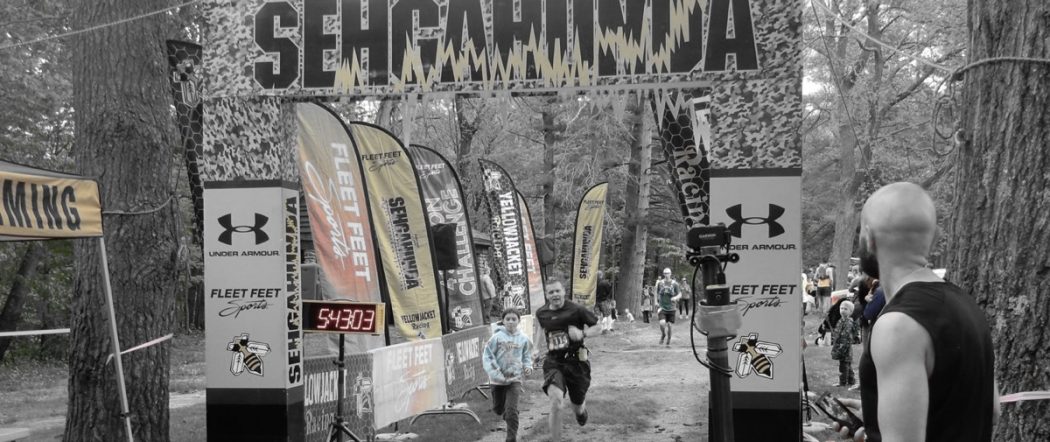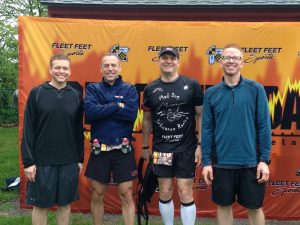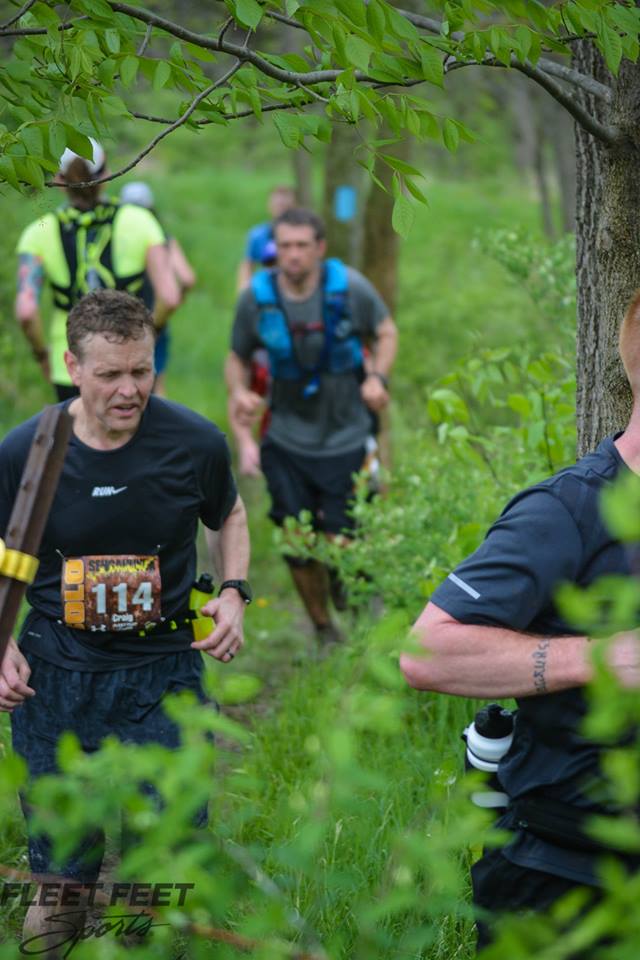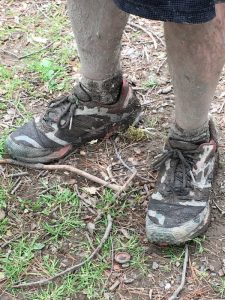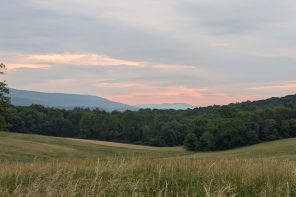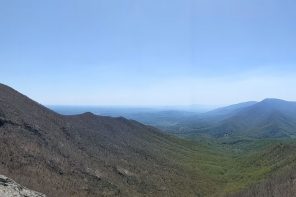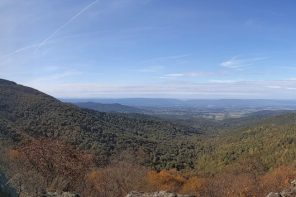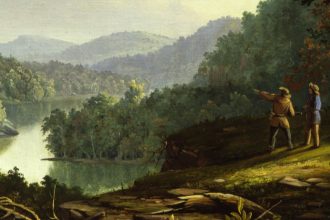As I sit down to share my Sehgahunda experience, I must first confess that I am really not your typical life-long runner. I did not even start running or even own a pair of running shoes until 7 years ago. I would classify myself as a recreational jogger. In that time, I’ve run a handful of 10k’s and 5k’s, but never anything longer….and never wanted to run anything longer.
I first heard about the Sehgahunda a few years ago. The Sehgahunda (Say-ga-hunda) is a 26.3 mile trail marathon alongside the Genesee River Gorge, traversing technical single track, crossing over 100 gullies, and climbing nearly 4000 ft. Having spent countless hours exploring Letchworth Park and being an avid hiker, the idea of a trail race there was intriguing. In the past I’ve been tempted to find some friends to do it as a relay but had never actually pulled together a team to tackle it. Running the whole race never even remotely crossed my mind.
This past December a couple friends started talking about signing up for the Sehgahunda. They joked with me about signing up with them, and I was pretty adamant that unless it was a relay, not to count on me. As they got more serious about it, so did their pressure, but I held my ground. I had a running routine. At that time, my buddy Adam and I were running about 6 miles a week, year-round, in snow, wind, and mud. I was good with that.
On December 5th, 2017, I succumbed to pressure and registered for the Sehgahunda, my first trail marathon and my first marathon. The good news for me was that Adam was willing to do it too, so I would not have to train alone.
We decided we’d officially start training after the new year. I scoured the interwebs for training plans that would take a 6 mile runner to a 26 point 3 mile runner by May 19th. The new year arrived and we immediately started ramping up our running routine. We first started with a 3 day a week program, which worked for a while, but as our long runs started to reach double digits, we migrated to a 4 day a week program. We followed the plan religiously. The relentless winter meant a lot of running in frigid temperatures on icy and snowy roads. It also meant that we would not get a ton of training on trails. It wasn’t until the last few weeks of training that we were able to move our runs exclusively to trails, but flat trails.
As race day approached I was frantically reading race reports from prior years, watching any videos of the race I could find, and keeping my eye on the weather. From what I had read, Sehgahunda would either be dry and very hot, or cool and very wet. As the day approached, it was hard to tell which it would be. A full night of rain the night before leading into the first hour of the race pretty much answered that question.
 The morning of the race, it was cold and rainy, very rainy. I picked up Adam and we made the trip down to the race. Nerves and fear of the unknown shaped the conversation. As we arrived to the starting area, cars were already in place and folks were doing their best to get prepped for the start and not get soaked in the process. My work buddies showed up soon after. We all stood shivering in the rain making predictions on how it might go, but nobody really knew. Which was a probably a good thing.
The morning of the race, it was cold and rainy, very rainy. I picked up Adam and we made the trip down to the race. Nerves and fear of the unknown shaped the conversation. As we arrived to the starting area, cars were already in place and folks were doing their best to get prepped for the start and not get soaked in the process. My work buddies showed up soon after. We all stood shivering in the rain making predictions on how it might go, but nobody really knew. Which was a probably a good thing.
This is not the first race I’ve run that was put on by Yellow Jacket Racing. Just like the others I’ve been in, this was a first-class event. Lots of volunteers, folks to help, music cranking, and the ever so important porta-potties located at the appropriate proximity to the start line.
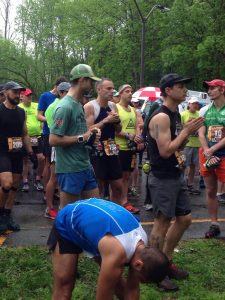 At 7:40 AM, we heard the final call for the women runners. They would be taking the start at 7:45. I’m not even sure I remember them leaving, cuz I was so focused on what I had gotten myself into, but it only seemed like seconds later that they called the men to the line. I wasn’t really sure where my pace would fall compared to others, but we lined up closer to the front of the line to avoid having to deal with extra congestion on the damp single track. No sooner did we line up, and we were off.
At 7:40 AM, we heard the final call for the women runners. They would be taking the start at 7:45. I’m not even sure I remember them leaving, cuz I was so focused on what I had gotten myself into, but it only seemed like seconds later that they called the men to the line. I wasn’t really sure where my pace would fall compared to others, but we lined up closer to the front of the line to avoid having to deal with extra congestion on the damp single track. No sooner did we line up, and we were off.
The first mile or so of single track was deceivingly kind. We maintained a good pace and worked our way along. Somewhere between mile 2 and 3 the main trail was very muddy and very slippery. I had heard rumors of lots of mud on the spur trails out to the checkpoints but did not expect it this soon. Fortunately, it did not last too long, and we continued on our way up and down the rolling terrain to the split to checkpoint 1. At that time, we started to realize just how hard this race was going to be. The trails out to the checkpoints are all up hill and very muddy…. Like want to pull your shoe off muddy. We reached the checkpoint around mile 6 and were greeted by extremely helpful volunteers and table full of goodies to refuel with. At each checkpoint volunteers would top off your bottles for you and make sure you were prepped for the next leg.
It was less than 3 miles to the next checkpoint, but it seemed longer. The run was similar to the first leg, but the frequency of the gullies started to increase a bit. We still maintained a pretty decent pace and got to checkpoint 2 feeling pretty strong. One nice thing about the checkpoints is that since they are two-way traffic, it gives you a chance to see how those that are ahead of you are doing. The highlight of this stretch was when one runner in our group proclaimed that “we were missing the royal wedding” which brought on a well needed laugh.
The 6 miles separating checkpoint 2 from checkpoint 3 were pretty tough. The gullies were steeper and deeper and more frequent. Many require very close attention to footing on the way down as it’s a narrow herd path along a steep bank. Often times, a creek would be running at the base of the gully, and slippery shale can very quickly change the outcome of your day. Before the race, I had made a mental note that checkpoint number 3 was going to be a tipping point in my race confidence. It was just over halfway, which mentally was a key milestone. By the time we got to the actual checkpoint, I was hurting. I had been struggling to find the right amount of nutrition throughout the run, and I had run out of water about 4 ½ miles into this leg, and I was thirsty. We spent a little extra time at this stop. Volunteers were unbelievable, paying close attention to each runner, and helping everybody refuel. There was also a pretty good group of spectators cheering us on.
The next 11 miles of racing would be filled by 5 more checkpoints. All of them had less than 3 miles between them, but those were all very long muddy miles. The confidence I anticipated at this point in the race was completely missing. Everything was starting to hurt so much that, though I was pretty sure we’d finish, my goal of finishing in under 6 ½ hours seemed to be in serious jeopardy. My feet were pretty torn up from the miles of running in wet gritty socks, but at that point, I just had to suck it up and keep going. I had read that there was a very tough climb around mile 18. What I did not realize was that the next 7 miles were riddled with very tough climbs. The group we were running with settled into a pattern of walking up the steep inclines and running the rest. Being new to the event and exhausted, we followed suit. It was a cycle of climb up, run a little level, run down, cross some ravines, and repeat. The effort was immense, and despite running through some of the most gorgeous terrain that nature has to offer, the focus was clearly on survival. At checkpoint 5 we asked someone if the worst of the climbing was over, and one runner kind of chuckled, as she told us the climb to checkpoint 6 was the worst. Despite the chuckle, this was no joke. Nonetheless, we pushed forward.
Right around mile 23 we left the single track and had reached the point of the course where it was dirt road and greenway. In typical Sehgahunda fashion, the dirt road started out with a steady climb that was slowing most competitors to a walk. Once the hill was behind us we started to run. All we had was a 5k left…. we’ve run hundreds of 5k distances. At that point in the race, that was easier said than done, and we were not alone in that. So, we’d pick a point ahead of us, usually the beginning of the slightest incline, and run to that point, walk a short distance, and take off running again. Once again, each mile felt like ten, and it wasn’t until another runner came up on us and told us we were not that far that we caught our second wind. At that point we were less than mile from the finish. We continued down the greenway to the point where it hit pavement. As we turned towards the finish, we were greeted with a steep climb on pavement. We pushed our way up the hill and made the turn into the parking lot that led to the finish line. Our pace picked up as we could hear the spectators cheering. We made the final turn and did our best to sprint across the line, where every runner’s name was announced as they crossed the finish.
We had done it. We had finished a marathon, not just a marathon but a trail marathon, not just a trail marathon but Sehgahunda!! We also did it well ahead of our projected time. It was the hardest and most rewarding competitive event I’ve ever entered, and I had conquered it. I’m not much of a bucket list person, but if I had a bucket and a checklist, this would be one big ole checkmark.
I’ll admit that the rest of the day after the event is pretty foggy. Between complete joy and complete exhaustion, I don’t really remember much of the rest of the day. In the past two days of difficult walking and other aches and pains, I’ve had a chance to reflect on the event and a few things are now very clear to me…
- Runners are great people. Literally dozens of runners would give a “looking good”, “keep it up”, “nice job” as we’d pass each other. Seeing the good in people is pretty easy at an event like this, and in these days, that’s a welcome sight.
- The volunteers are simply amazing. I don’t know how many volunteers it took to set up the course, the checkpoints, the finish, and to man the checkpoints, but it’s a big number and each and every one of them was outstanding. They were encouraging, helpful, and were the difference between succeeding and failing in a race like this.
- Letchworth State Park is a gem and we’re blessed to be able to have an event like this in a place so beautiful.
- The Sehgahunda is an outstanding event. The folks at Yellow Jacket Racing do an amazing job. The whole event was very well organized, the course was clearly marked, the checkpoints were stocked perfectly, and the finish line food and festivities were terrific.
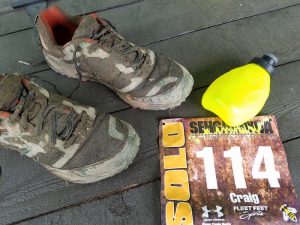 As I was running the event, I’ll admit, that I had moments of extreme unhappiness. Since crossing the finish line, I’m very happy my friends pushed me into running this race. When my wife asked me if I’d do it again, my initial response was no. As the pain has subsided and the bad memories are starting to fade, I think I could be talked into the relay. Given more time, who knows, maybe Sehgahunda 2019 will be on my calendar and the whole crazy process will start all over again. But until then, I’m going to put my finishers medal in a prominent place and bask in the joy of my day spent with Lady Sehgahunda.
As I was running the event, I’ll admit, that I had moments of extreme unhappiness. Since crossing the finish line, I’m very happy my friends pushed me into running this race. When my wife asked me if I’d do it again, my initial response was no. As the pain has subsided and the bad memories are starting to fade, I think I could be talked into the relay. Given more time, who knows, maybe Sehgahunda 2019 will be on my calendar and the whole crazy process will start all over again. But until then, I’m going to put my finishers medal in a prominent place and bask in the joy of my day spent with Lady Sehgahunda.
For more information about the Sehgahunda visit Yellow Jacket Racing.

